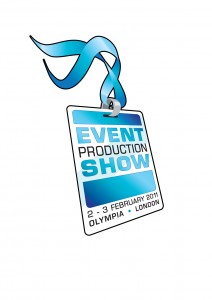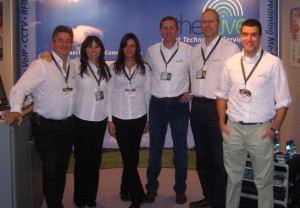The Etherlive team are now in the last stages of planning in preparation for the Event Production Show at Olympia on 2 – 3 February. We are on stand 620, on the right hand side of the main isle not far from the entrance. As usual the team will be ready to answer questions, discuss services and demonstrate equipment. With a Royal Wedding this year and the Olympics next year it is important to get services booked early – we are already seeing a knock on impact from these events, for example lead times are increasing for telecommunication services and this will get worse during the year.
Alongside our normal array of solutions for connectivity, communications, monitoring and interactive technology we will also be demonstrating three new services:
Crew Accreditation System – A contact-less RFID card (or wristband) system which makes managing crews simpler. The system uses a PC or touchscreen terminal to manage crew as they book out keys, radios, plant equipment and doubles as a crew catering system replacing those pesky paper vouchers. Multiple terminals can be used over the site such as in the catering tent and production offices. All the data is easy to manage allowing production to forecast catering requirements and track items quickly.
Dynamic Secure Wi-Fi – There has been a lot of press recently about the security of wireless networks and even though we already have a very secure system we will launching an even better solution. What’s great about it is that it’s easier for the user but more secure as every user has their own unique encryption key. Aimed at events when privacy is critical it will reside alongside our existing range of wireless services so that you can decide what level is appropriate for your event.
Communications Tower Light – Not completely new as it is in its second year of use by Etherlive but this palletised, environmentally tower light was a great success during the 2010 season so we have been improving it further. Supporting Wi-Fi and cabled networking, public address and CCTV from one unit, it is perfect for quickly deploying technology services in areas with no power. The 2011 unit now has multiple camera options with a new higher zoom and motion tracking enabled camera added to the range; and if you need high density outdoor wireless there are options for up to 750 simultaneous Wi-Fi connections off of one unit.
Take a moment to register here if you plan to come along to the show to speed up getting in and of course if you want to set-up a specific time to meet you can get in contact beforehand.
We hope to see you at the show!





